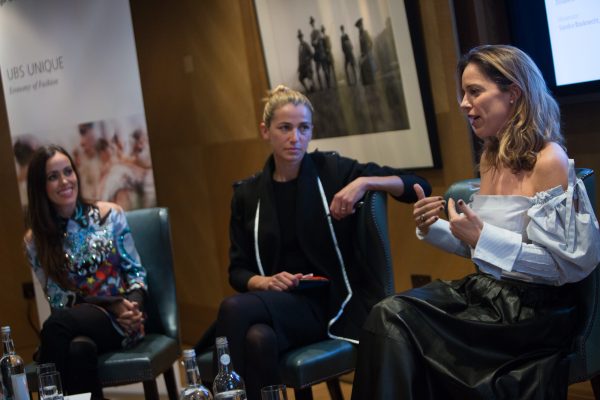
Yesterday evening, I was invited to an evening on the topic of the future of fashion and fabrics by UBS at the FREITAG Lab in Zurich.
 With lovely Natascha Lander, UBS Chief Investment Office, Wealth Management
With lovely Natascha Lander, UBS Chief Investment Office, Wealth Management
The evening started with a private guided tour of the FREITAG factory by Daniel Freitag himself, founder of the Freitag brand, followed by drinks and networking and then seated dinner whilst listening to a presentation of Christina Dean, founder of The R Collective and Redress and a UBS Global Visionary, who was addressing the problem of waste and pollution by the fashion industry. My avid readers might recognize her from the UBS Unique – Economy of Fashion forum in 2017.
 The first messenger bag F13 TOP CAT is exhibited at the MoMA in New York.
The first messenger bag F13 TOP CAT is exhibited at the MoMA in New York.
Let me get started with the story of FREITAG which is a truly inspiring one. In 1993, graphic designers and brothers Markus and Daniel Freitag were looking for a functional, water-repellent and robust bag to hold their creative work. Inspired by the multicolored heavy traffic that rumbled through the Zurich transit intersection in front of their flat, they developed a messenger bag from used truck tarpaulins, discarded bicycle inner tubes and car seat belts. This is how the first FREITAG bags took shape in the living room of their shared apartment – each one recycled, each one unique. By the way, the first messenger bag F13 TOP CAT wrote fashion history and can be looked at at the MoMA in New York.
 Each FREITAG bag is unique made from truck tarps.
Each FREITAG bag is unique made from truck tarps.
With their innovation, the brothers inadvertently triggered a seismic event in the world of bag making. Its tremors have since made themselves felt in Zurich and the cities of Europe and spread all the way to Asia, making FREITAG the unofficial outfitter of all urban, bike-riding individualists. Today, FREITAG is one of the most hyped brands in Thailand and Japan. The products are available in 24 by the brand owned stores as well as at over 400 resellers around the world with an extensive choice of over 4000 unique products available in the online store. I was pretty impressed of the work that goes into the shoot of each product. Imagine that every single bag is unique and therefore needs to be photographed individually.
 Each bag is shot separately for the online store.
Each bag is shot separately for the online store.
 FREITAG likes the tarps that they make bags from to have some popping color schemes, but it’s not always so easy to find them, especially since they want to use truck tarps that were on the road for quite a time.
FREITAG likes the tarps that they make bags from to have some popping color schemes, but it’s not always so easy to find them, especially since they want to use truck tarps that were on the road for quite a time.
Since the first F13 TOP CAT messenger bag, the collection has spawned a full range of over 80 different models for all your carrying needs: from smartphone and laptop sleeves via backpacks and on to handbags, shoppers and travel bags.
 Creating new shapes and models is part of the design process.
Creating new shapes and models is part of the design process.
FREITAG has been at home in the Nœrd industrial complex in Zurich-Oerlikon since 2011. This is where the truck tarps we collect are taken apart, washed and cut to size. The sewing has been outsourced to other Swiss companies.
 A great sustainable concept: unscrewed buttons.
A great sustainable concept: unscrewed buttons.
 Newest project: a small clothing line.
Newest project: a small clothing line.
In 2014, the bag-makers gave themselves a new raw material to play with: F-ABRIC. Developed in-house from the ground up, the rugged, completely compostable textiles are based on bast fibers that are produced using a minimum of resources within a 2500-kilometer radius of headquarters. F-ABRIC thus more than lives up to the FREITAG philosophy: «We think and act in cycles.»
 The team works following a self-management strategy. Each team member shows the time that he or she works on a project with the help of LEGO stones on a board.
The team works following a self-management strategy. Each team member shows the time that he or she works on a project with the help of LEGO stones on a board.
«I stepped back as CEO. I am an originator, apostel, incubator and more.»
– Daniel Freitag
 Daniel Freitag with me
Daniel Freitag with me
FREITAG has not only committed to the circular, closed-loop economy but is also organized in circles: in 2016, the company, which still belongs to the Freitag brothers, abandoned the classical hierarchical structure and replaced it with Holacracy, a form of organization based on self-management.
 We were served a yummy Züri Geschnetzeltes in form of mushroom protein instead of meat for the vegan surprise dinner at Noerd Kantine.
We were served a yummy Züri Geschnetzeltes in form of mushroom protein instead of meat for the vegan surprise dinner at Noerd Kantine.
The guided tour by Daniel Freitag was very impressive and so was the vegan dinner in the Noerd Kantine, which is in the same building as the Freitag Lab. Personally speaking, FREITAG is a company that I would like to work in.
 Christina Dean with me
Christina Dean with me
Christina, who calls herself a «sustainable fashion advocate», started Redress following a phenomenal life-changing professional and personal experience. She used to be a dentist, then a journalist before moving to Hong Kong. After a bike trip through Southern China, she became increasingly interested in China’s environmental crisis. The more she investigated the sources, the more compelled she became by how the country’s fashion and textile industries were contributing to this drastic situation, which not only affects the planet but is also killing people.
Rescue. Reuse. Reimagine.
«Waste is not waste until it is wasted.»
This insight led to a huge professional change. First, she only wore for one year clothes that other people had thrown away. Parallel, she started the NGO Redress, followed later by The R Collective, that creates sustainable fashion using rescued textile waste sourced from the world’s leading luxury fashion brands and reputable mills and manufacturers. These materials are reused through upcycling, reimagining the destiny of textile waste with timeless designs. With these innovative techniques and sustainable designer collaborations, the team is catalysing the circular fashion revolution.

«Let’s be global fashion citizens, not consumers.» – Christina Dean
This said, I am wishing you a happy and inspiring long weekend!
Thank God it’s Friday, or as we Germans say Freitag…
LoL, Sandra

Photos in first college and of the first messenger bag: Courtesy of FREITAG
All other photos: © Sandra Bauknecht


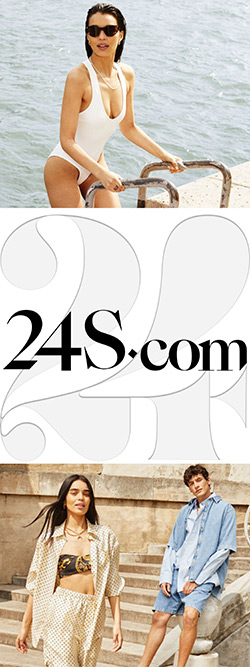




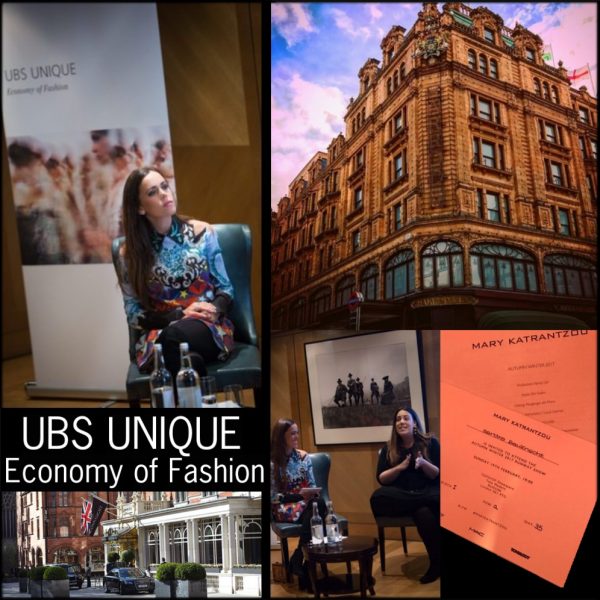
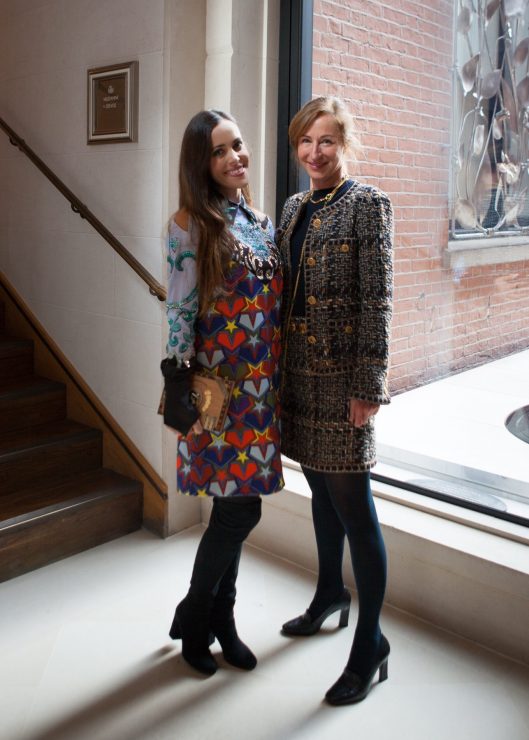 My lovely host, Kathrin Genovese Head Vice Chairmen Office, Global Ultra High Net Worth
My lovely host, Kathrin Genovese Head Vice Chairmen Office, Global Ultra High Net Worth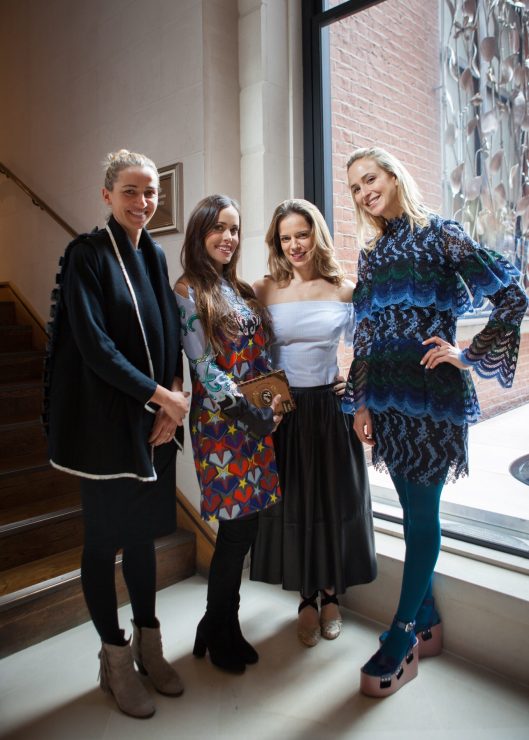 From left to right: Christina Dean, my humble self, Giorgia Caovilla and Elisabeth von Thurn und Taxis.
From left to right: Christina Dean, my humble self, Giorgia Caovilla and Elisabeth von Thurn und Taxis.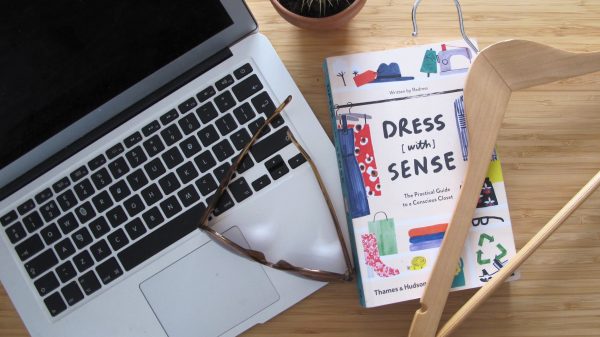
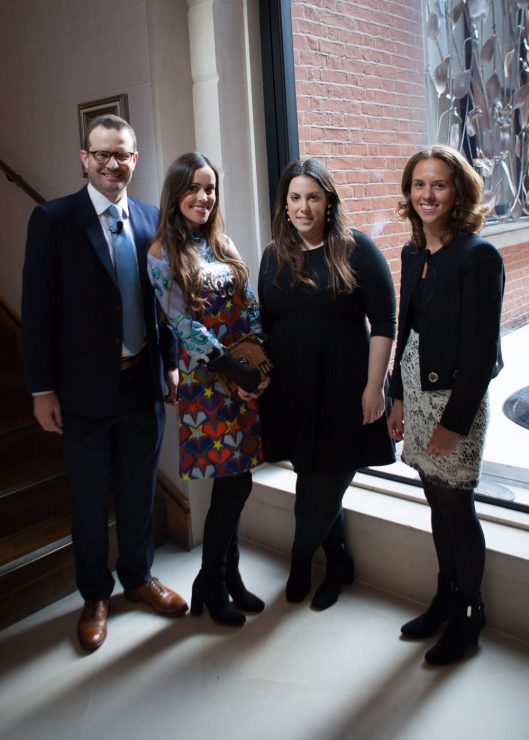 Designer Mary Katrantzou and me framed by UBS key speakers, James Gifford, Senior Impact Investing Strategist, Chief Investment Office, UBS Wealth Management, to the left and Helen Brand, Head of Equity Research, European Luxury Goods, UBS Investment Bank
Designer Mary Katrantzou and me framed by UBS key speakers, James Gifford, Senior Impact Investing Strategist, Chief Investment Office, UBS Wealth Management, to the left and Helen Brand, Head of Equity Research, European Luxury Goods, UBS Investment Bank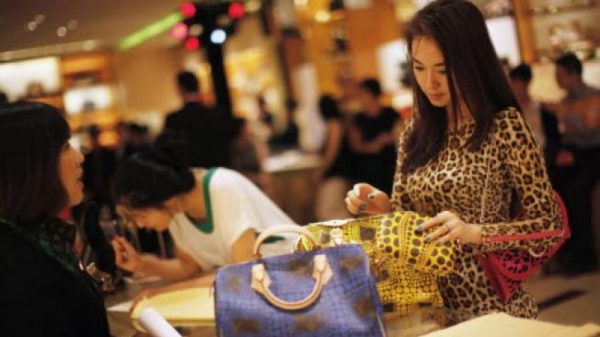 A woman shops in a Louis Vuitton store in Shanghai. © SCMP Photos
A woman shops in a Louis Vuitton store in Shanghai. © SCMP Photos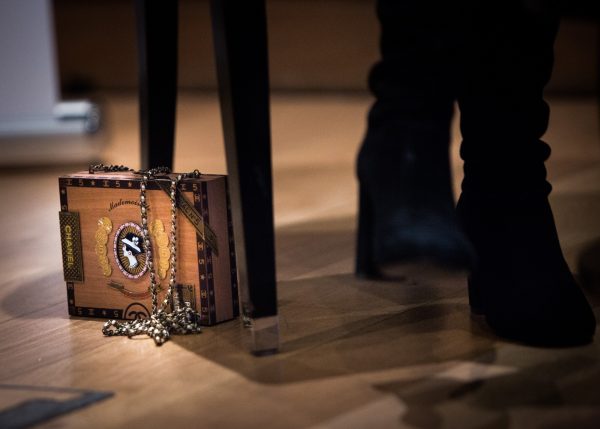
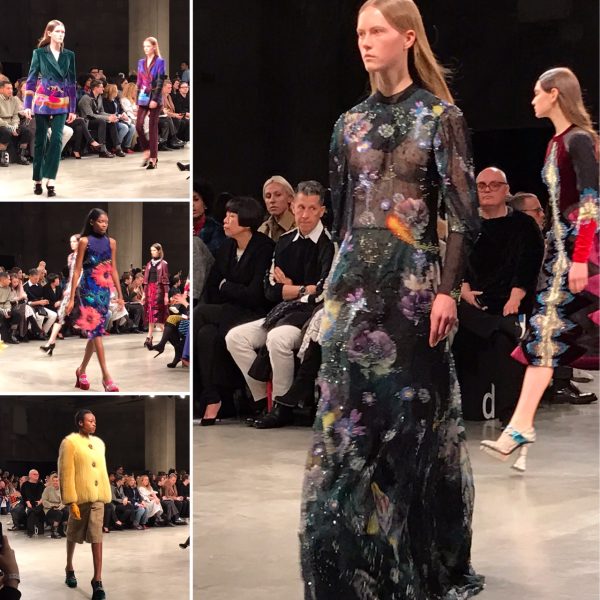 Great show: Mary Katrantzou’s F/W 2017 presentation took place at Tate Modern.
Great show: Mary Katrantzou’s F/W 2017 presentation took place at Tate Modern.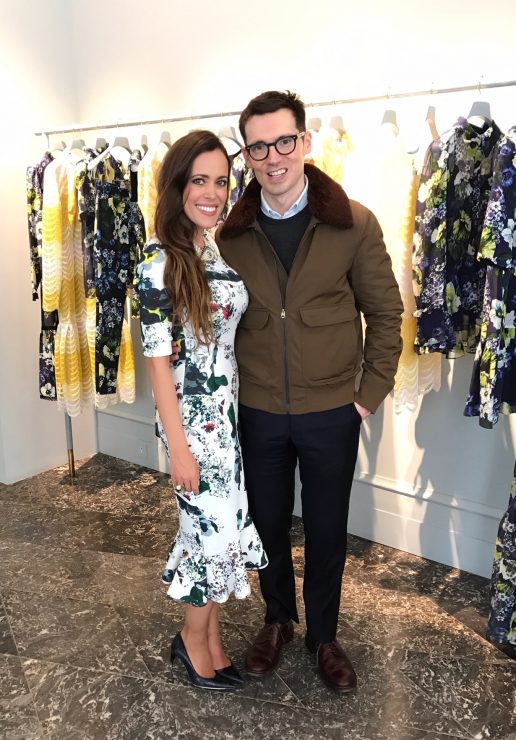 With Erdem in his Mayfair store for a private shopping event during the «Economy of Fashion».
With Erdem in his Mayfair store for a private shopping event during the «Economy of Fashion».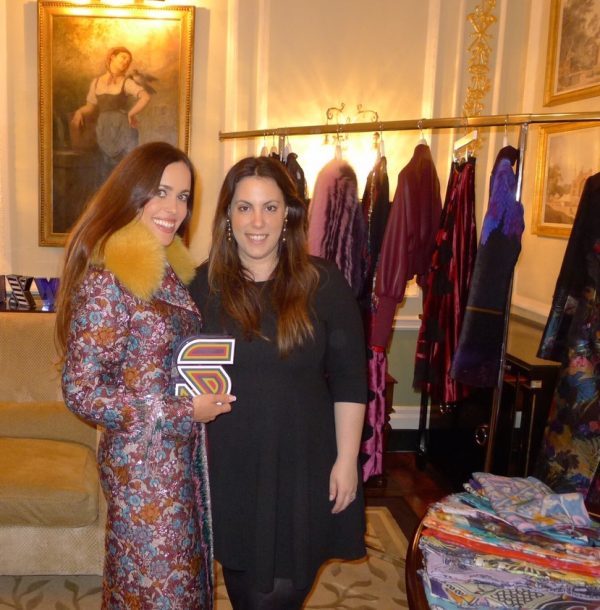 With Mary Katrantzou in the private shopping suite at the at the Connaught Hotel in Mayfair, wearing an amazing coat from her F/W 2017 collection.
With Mary Katrantzou in the private shopping suite at the at the Connaught Hotel in Mayfair, wearing an amazing coat from her F/W 2017 collection.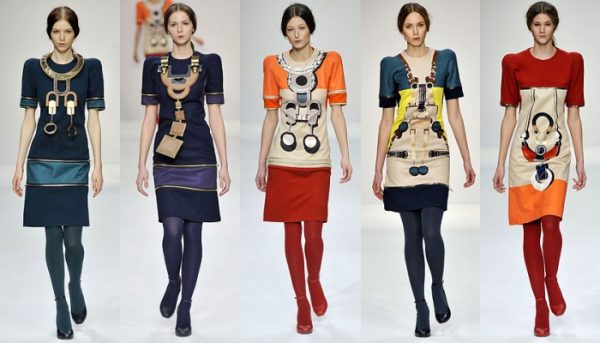 Success from the first moment: Mary Katrantzou’s graduate collection in 2008.
Success from the first moment: Mary Katrantzou’s graduate collection in 2008.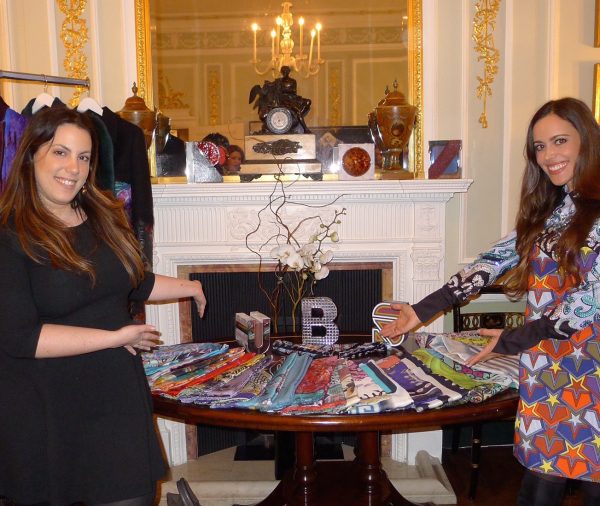 Best of both worlds… fashion and finance.
Best of both worlds… fashion and finance.